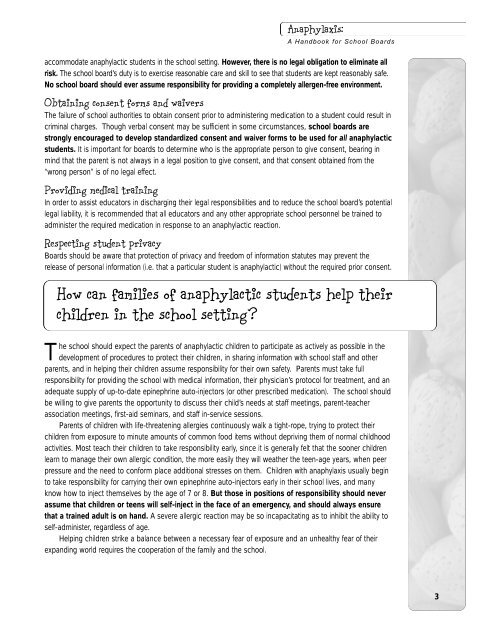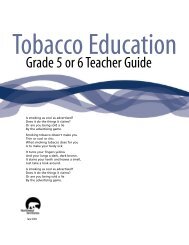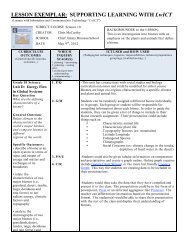Anaphylaxis: A Handbook for School Boards - Education, Culture ...
Anaphylaxis: A Handbook for School Boards - Education, Culture ...
Anaphylaxis: A Handbook for School Boards - Education, Culture ...
You also want an ePaper? Increase the reach of your titles
YUMPU automatically turns print PDFs into web optimized ePapers that Google loves.
<strong>Anaphylaxis</strong>:A <strong>Handbook</strong> <strong>for</strong> <strong>School</strong> <strong>Boards</strong>accommodate anaphylactic students in the school setting. However, there is no legal obligation to eliminate allrisk. The school board’s duty is to exercise reasonable care and skill to see that students are kept reasonably safe.No school board should ever assume responsibility <strong>for</strong> providing a completely allergen-free environment.Obtaining consent <strong>for</strong>ms and waiversThe failure of school authorities to obtain consent prior to administering medication to a student could result incriminal charges. Though verbal consent may be sufficient in some circumstances, school boards arestrongly encouraged to develop standardized consent and waiver <strong>for</strong>ms to be used <strong>for</strong> all anaphylacticstudents. It is important <strong>for</strong> boards to determine who is the appropriate person to give consent, bearing inmind that the parent is not always in a legal position to give consent, and that consent obtained from the“wrong person” is of no legal effect.Providing medical trainingIn order to assist educators in discharging their legal responsibilities and to reduce the school board’s potentiallegal liability, it is recommended that all educators and any other appropriate school personnel be trained toadminister the required medication in response to an anaphylactic reaction.Respecting student privacy<strong>Boards</strong> should be aware that protection of privacy and freedom of in<strong>for</strong>mation statutes may prevent therelease of personal in<strong>for</strong>mation (i.e. that a particular student is anaphylactic) without the required prior consent.How can families of anaphylactic students help theirchildren in the school setting?The school should expect the parents of anaphylactic children to participate as actively as possible in thedevelopment of procedures to protect their children, in sharing in<strong>for</strong>mation with school staff and otherparents, and in helping their children assume responsibility <strong>for</strong> their own safety. Parents must take fullresponsibility <strong>for</strong> providing the school with medical in<strong>for</strong>mation, their physician’s protocol <strong>for</strong> treatment, and anadequate supply of up-to-date epinephrine auto-injectors (or other prescribed medication). The school shouldbe willing to give parents the opportunity to discuss their child’s needs at staff meetings, parent-teacherassociation meetings, first-aid seminars, and staff in-service sessions.Parents of children with life-threatening allergies continuously walk a tight-rope, trying to protect theirchildren from exposure to minute amounts of common food items without depriving them of normal childhoodactivities. Most teach their children to take responsibility early, since it is generally felt that the sooner childrenlearn to manage their own allergic condition, the more easily they will weather the teen-age years, when peerpressure and the need to con<strong>for</strong>m place additional stresses on them. Children with anaphylaxis usually beginto take responsibility <strong>for</strong> carrying their own epinephrine auto-injectors early in their school lives, and manyknow how to inject themselves by the age of 7 or 8. But those in positions of responsibility should neverassume that children or teens will self-inject in the face of an emergency, and should always ensurethat a trained adult is on hand. A severe allergic reaction may be so incapacitating as to inhibit the ability toself-administer, regardless of age.Helping children strike a balance between a necessary fear of exposure and an unhealthy fear of theirexpanding world requires the cooperation of the family and the school.3
















